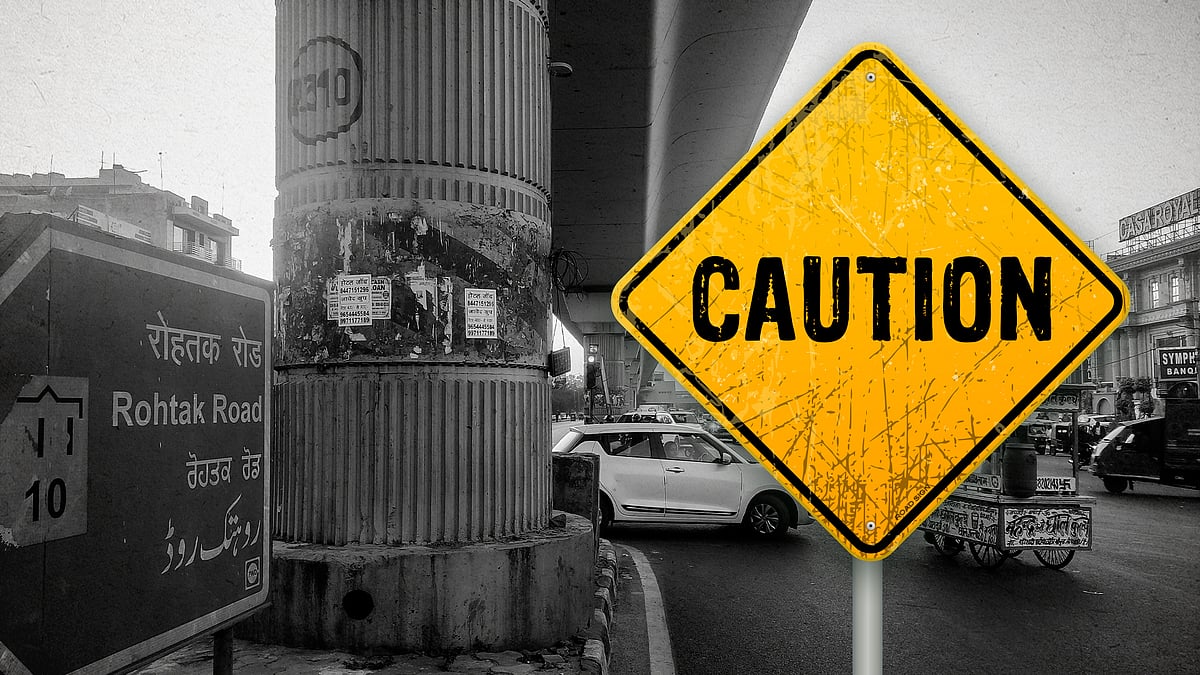The high cost of overspeeding on Indian roads – and the peculiar silence on the issue
Punitive measures, like penalties and speed guns, aren’t enough to tackle it.
On the night of July 19, an incident on Iskcon flyover in Ahmedabad left a trail of destruction. A Mahindra Thar, driven by a 16-year-old, collided with a dumper truck. As bystanders gathered, a Jaguar driven at 150 km pr hour by a 19-year-old, sped into them. Nine people died – but this is just one of many, many tragedies in India caused by overspeeding.
The conversation around road safety in India briefly gained momentum in September last year, following the death of businessman Cyrus Mistry in a road accident. Soon after, union minister for road transport and highways Nitin Gadkari mandated the strict enforcement of rear seatbelt laws. While traffic police initiated awareness campaigns and imposed fines for a short period, the issue soon faded from public discourse. It resurfaced three months later when cricketer Rishabh Pant was injured in a road accident .
In all three cases, various factors were blamed for the tragedies. In Ahmedabad, the absence of street lights and warning signs on the flyover drew sharp criticism. Mistry’s accident raised questions about road design, while potholes were identified as the culprits in Pant’s case.
While these factors contribute to road accidents in India, what’s conspicuously absent from these conversations is the issue of overspeeding.
Last year in the Lok Sabha, Congress MP VK Sreekandan asked: “Is it true that overspeeding accounts for nearly 70 percent of the total 1,31,714 deaths due to road accidents in the country?”
Gadkari’s reply was unequivocal: “Yes, sir.”
According to 2021 data from the National Crime Records Bureau, 55.9 percent of fatalities in road accidents – amounting to 87,050 deaths – were attributed to overspeeding. The peculiar silence on the issue may be rooted in the dynamics of India’s public discourse on road safety, which is seemingly dominated by voices from the affluent class. It is this demographic that often engages in instances of overspeeding, particularly with high-performance sports bikes and luxury SUVs. The proliferation of online content that glorifies high-speed driving further perpetuates this dangerous trend.
Yet the consequences of such reckless driving are borne by poorer segments of society. According to a 2021 report by the Save Life Foundation, 44 percent of rural households reported at least one death resulting from a road crash as against 11.6 percent of urban households. Poorer families are four times more vulnerable to road accidents than their wealthier counterparts. This inequality extends to economic repercussions too, with 75 percent of poor households experiencing a decline in total household income after a road accident, compared to 54 percent in rich households.
The report concludes that the “socioeconomic burden of road crashes is disproportionately borne by poor households”.
Overspeeding, specifically, claimed 98,613 lives in India in 2017. That’s 11 lives lost every hour. In April 2018, the central government increased the maximum speed limits for expressways to 120 km/hr, for national highways to 100 km/hr, and for urban roads to 60 km/hr for M1-category vehicles, referring to most passenger vehicles with less than eight seats. The decision was attributed to improvements in road infrastructure and engine technology.
But there were consequences. The percentage of road accidents as a result of overspeeding spiked from 55.73 percent in 2018 to 64.4 percent in 2019. In September 2021, the Madras High Court quashed the central government’s 2018 notification. While doing so, it noted that despite knowing that overspeeding causes accidents, the government still increased speed limits.
Traditionally, overspeeding has been addressed through punitive measures like speed indicator displays, speed guns, and traffic violation penalties. But this approach alone is ineffective. The Madras High Court had suggested a creative solution: taking licence-seekers to hospitals where accident victims are receiving treatment, so they can witness the consequences of violations firsthand.
This approach may contribute to behavioural changes, but more fundamental changes are needed. Indian roads, from rural lanes to express highways, are designed with a maximum vehicle width of 2.5 metres. Manufacturers are prohibited from designing vehicles wider than this standard. But when it comes to speed, express highways are designed for maximum speeds of 120-150 km/hr for cars and 80-100 km/hr for two-wheelers.
This begs the question of why automobile makers are allowed to produce vehicles capable of speeds of 200-250 km/hr. In 2017, Justice N Kirubakaran of the Madras High Court had emphasised the need to calibrate imported vehicles to conform to Indian conditions and speed limits.
Speed isn’t just a contributing factor to road accidents; it also determines the severity of road traffic crashes. As speeds increase, so does the likelihood of severe injuries or fatalities.
According to the World Health Organisation, a pedestrian hit by a car moving at less than 50 km/hr has a better chance of survival (less than 20 percent likelihood of death) compared to a pedestrian hit at 80 km/hr (almost certain death). The WHO’s 2022 study also said that a one km/hr increase in mean vehicle speed results in a four to five percent increase in fatalities. In the UK, speed is responsible for 28 percent of all road traffic crashes resulting in death. It’s 30 percent in Australia, and an alarming 60 percent in India.
Data suggests that a five percent reduction in average speed can lead to a remarkable 30 percent decrease in fatal road traffic crashes.
As a signatory to the Stockholm Declaration of 2020, India is committed to achieving zero road fatalities by 2030. To achieve this ambitious goal, we need reforms in road design, infrastructure and the process of issuing driving licences.
But it’s also overspeeding – the elephant in the room – that needs to be addressed.
 Tragedy on Rohtak road: With two major accidents this year, why residents want a footbridge
Tragedy on Rohtak road: With two major accidents this year, why residents want a footbridge